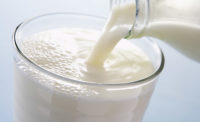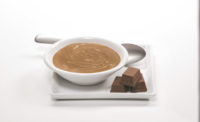To grow the shelf-stable milk market dairy processors need to educate consumers
To grow the market for aseptically processed milk, dairy processors need to educate consumers about its taste and sustainability.

It seemed like any other day in the school cafeteria – except for one small change. Instead of the usual gable-top milk packages, students at 18 Colorado elementary and middle schools were offered white and chocolate milk in aseptic packaging during the 2015-2016 school year. The response from students was enthusiastic.
By the end of this pilot milk program, there was a 58% increase in elementary school students choosing milk and milk consumption among middle school students doubled. The additional milk consumption had other benefits: daily lunches served by the schools rose 6% and logistical control, efficiency and flexibility also increased.
The findings from this program hint at a bigger opportunity for dairy companies to grow market share by educating consumers about the flavor, naturalness and other benefits of shelf-stable milk. Milk processors looking to grow sales of aseptic dairy products to all consumers (not just students) may want to consider the following ideas.
Consider flavors, formulas
Beyond chocolate and strawberry mainstays, dairy companies may want to consider other flavors and formulas in their aseptic offerings. As noted in a Washington Post article, adding flavor and a carbohydrate boost to milk can help with muscle recovery. Traditional chocolate, strawberry and vanilla milk flavors, meanwhile, have an ideal four-to-one ratio of carbohydrates-to-proteins that stimulate muscle protein repair and growth when consumed after a workout. This makes flavored aseptic milk a functional, tasty option for athletes of all ages.
Additional drinking occasions
According to research by Tetra Pak, only three people out of 10 are even aware of shelf-stable milk. It could mean that these consumers are unaware that shelf-stable milk functions in the same way as other ultra-pasteurized drinks, like boxed juice. Educating people on how ultra-pasteurization makes aseptic milk safe to take anywhere, from school to the gym, may increase awareness, knowledge and willingness to give aseptic milk a try.
Aseptic milk reduces waste
The Colorado school milk pilot wasn’t just a win for children and their nutrition. The schools also saved time and money through the distribution process. Students wasted less chocolate milk and administrators and school staff found that aseptic milk could be delivered every three to five days versus cold-packaged milk’s every-other-day schedule. Milk could be self-distributed among schools in the district instead of being delivered to each school in a refrigerated truck. Given consumers’ interest in environmentally friendly food choices and their willingness to pay more for them, dairy brands offering shelf-stable milk should underscore this inherent benefit and how it helps reduce food waste.
The majority of students in Colorado’s shelf-stable milk pilot were familiar with other beverages served in the same packaging. This suggests that knowledge and acceptance of shelf-stable milk is growing, at least among some of the youngest consumers.
By encouraging their parents to try aseptic milk through green storytelling, highlighting its numerous usage occasions and enhanced portability over cold-packaged milk, and offering flavored varieties, dairy brands have a chance to share the benefits and tap into a tremendous market opportunity.
Source: “Broader Pilot of Milk Aseptic Packaging in Schools: Preliminary Pilot Report, June 2016.” Conducted by Prime Consulting in partnership with Diversified Foods Inc. and Tetra Pak.
Looking for a reprint of this article?
From high-res PDFs to custom plaques, order your copy today!






